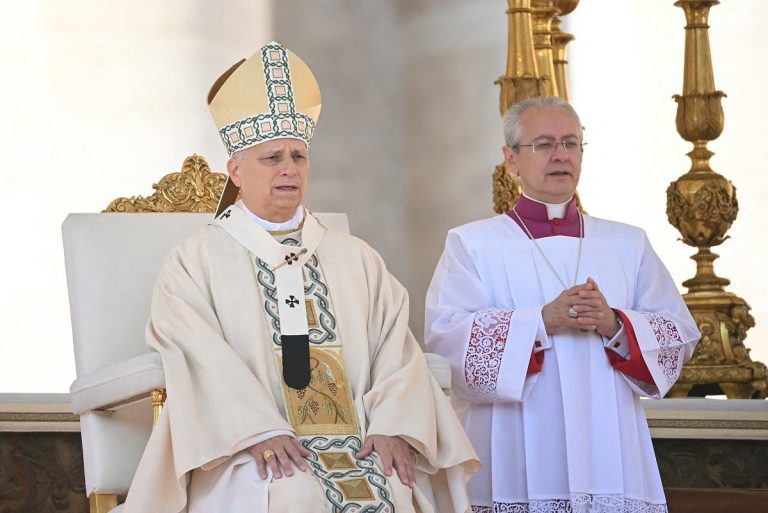Thieves Steal Napoleonic Jewels in Louvre Heist
On a Sunday morning, the Louvre, renowned as the world’s most visited museum, became the scene of a daring theft. Thieves executed a meticulously planned operation, targeting valuable Napoleonic jewels in the Apollon Gallery. In a swift seven-minute heist, they managed to escape with eight priceless treasures while visitors looked on, fortunately without any injuries reported.
The Theft Details
The audacious break-in involved the use of a construction lift positioned along the Seine. Dressed as workers, the thieves accessed a window near the Apollon Gallery, located just 250 meters from the iconic Mona Lisa. Once inside, they employed disc cutters to smash display cases and swiftly seized valuable items, including an emerald-and-diamond necklace originally made for Empress Marie Louise.
Among the stolen treasures were notable pieces such as crowns, a parure, earrings, and a brooch. The thieves executed their plan with remarkable efficiency, completing the operation in just four minutes. Confusion ensued among tourists, leading to an evacuation of the glass pyramid and surrounding areas as law enforcement cordoned off the vicinity.
Recovery Efforts
While the thieves managed to escape on scooters, one item—the crown of Empress Eugénie—was later found nearby, albeit damaged. The Louvre was closed for the day as police and forensic teams began their investigation. They are currently reviewing CCTV footage, examining access points, and interviewing museum staff to gather more information about the incident.
Interior Minister Laurent Nunez acknowledged the high-profile nature of the crime and pointed out security vulnerabilities, particularly around construction zones. The incident raises concerns about the museum’s ability to protect its treasures, especially given the increasing number of visitors and staffing challenges.
Historical Context
The Louvre has a history of thefts, including the famous 1911 disappearance of the Mona Lisa. While major artworks receive heightened security, other artifacts, like the Napoleonic jewels, may not have the same level of protection. This incident has reignited discussions about the museum’s security measures, especially in light of President Macron’s €700 million modernization plan aimed at improving safety and expanding gallery space.
Critics, including far-right politician Jordan Bardella, have labeled the theft a “national humiliation,” further intensifying scrutiny on the government’s handling of cultural heritage protection.
The Value of the Stolen Items
Experts describe the stolen jewels as having “inestimable” historical value. However, the likelihood of recovery remains low, as professional thieves often dismantle and recut jewels to eliminate any trace of their provenance. Investigators are working diligently to determine the number of perpetrators involved and whether there was any inside assistance in planning the heist.
FAQs
What items were stolen during the Louvre heist?
The thieves took eight treasures, including an emerald-and-diamond necklace for Empress Marie Louise, crowns, a parure, earrings, and a brooch.
How did the thieves access the Apollon Gallery?
The thieves used a construction lift to reach a window near the gallery, allowing them to break in disguised as workers.
What measures are being taken to improve security at the Louvre?
In response to the theft, there is renewed scrutiny on President Macron’s €700 million modernization plan, which aims to enhance security and expand gallery space within the museum.
Conclusion
The recent theft at the Louvre underscores significant security challenges facing the museum, particularly in light of ongoing construction and increasing visitor numbers. As investigations continue, the focus will be on enhancing protective measures to safeguard invaluable cultural artifacts and prevent future incidents.
The Louvre, housing over 35,000 works of art, has long been a target for thieves due to its vast collection and historical significance. The museum’s security protocols have evolved over the years, yet this incident highlights potential gaps that could be exploited. The presence of construction work, while necessary for modernization, may inadvertently create vulnerabilities that criminals can take advantage of, as seen in this heist.
In the aftermath of the theft, museum officials are likely to reassess their security strategies, including the deployment of personnel and surveillance technology. The incident may also prompt discussions about the balance between accessibility for the public and the need for heightened security measures to protect invaluable artifacts. As the investigation unfolds, the museum community will be closely monitoring the situation, hoping for the swift recovery of the stolen items and a renewed commitment to safeguarding cultural heritage.
Also Read:
Louvre Museum Closes After Security Breach Incident
UAE Passport Ranked Among World’s Most Powerful Travel Docum







